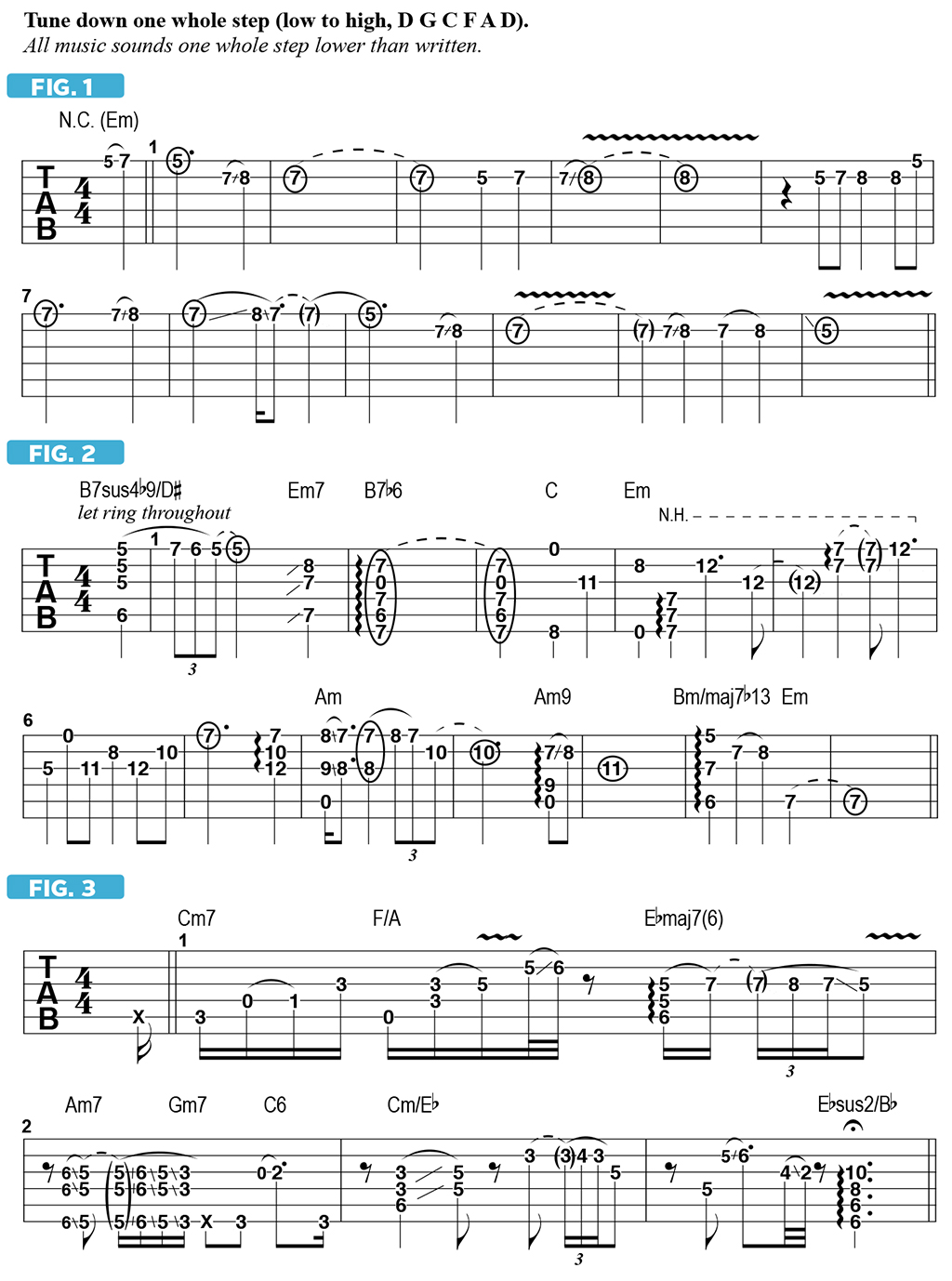Composing Away from the Guitar
Jason Richardson dishes on how to write guitar music that finds its inspiration and development away from the guitar.
In this column, I’d like to talk about writing guitar music that finds its inspiration and development away from the guitar. I’m a fan of composer Hans Zimmer, and when I was watching his Master Class, I was inspired to write on the piano. This quickly lead me to compose a new piece that evolved without ever touching my guitar. Using a sequencer, I programmed this very simple melody in the key of E minor, adapted for guitar in FIGURE 1, as played on a glockenspiel.

Under this melody, I programmed strings and piano that lay out the chord progression that sits under the line. My next step was to devise how to implement the chord movement along with the melody line on the guitar. The point is that the composition itself would never have come to me had I not been initially programming on the computer.
After tinkering around for a while with different chords and chord voicings, I settled on FIGURE 2. While keeping what is essentially the identical melodic line on top, the harmony becomes relatively complex as the line progresses. I chose to hybrid pick throughout, combining fingerpicking and flatpicking, as this facilitates a clear presentation of the melody. Combining chords with an upper melodic line is a style known as chord-melody.
I begin with B7sus4b9/D#, with a high A note on top, followed by a quick double pull-off from B to Bb to A. I then move from Em7 to B7b6, with a brief stop on C then back to Em.
In bars 5-7, I perform a series of natural harmonics (N.H.) that serve to fill out the Em tonality. In bars 7 and 8, wide-voiced three-note chords are held, and in bars 9 and 10, unusual wide-voiced chords reference Am with nods to Am9#11 and Am6/9. The phrase wraps up in bar 12 with a quickly arpeggiated Bm/maj7b13 chord that resolves to Em. The arpeggiation is performed by picking the notes with the pick, index and ring fingers in succession.
As you play through this example, strive for clarity in both the melodic line and the supporting chords played beneath it. These are rather unusual chord voicings that need to be both carefully fretted and picked.
I recommend that you first familiarize yourself with each chord shape, and the way the melodic lines carry the musical idea from one chord to the next, before playing this phrase up to tempo.
FIGURE 3 comes from a work in progress and was conceived and approached in a similar manner as the previous example, played chord-melody style, in this case using straight fingerpicking. As you can see, the chords are often arpeggiated, with the chord tones played sequentially as opposed to simultaneously. The phrase begins with intentional rhythmic ambiguity, but by the second half of bar 1, the beat is clearly established. Play through each bar slowly and carefully, examining each of these unusual chord shapes and the manner in which the melodic line carries the musical idea forward.
Jason Richardson is best known for his work with All Shall Perish, Born of Osiris and Chelsea Grin. He’s currently lead guitarist for All That Remains.
Get The Pick Newsletter
All the latest guitar news, interviews, lessons, reviews, deals and more, direct to your inbox!
“There are so many sounds to be discovered when you get away from using a pick”: Jared James Nichols shows you how to add “snap, crackle and pop” to your playing with banjo rolls and string snaps
Don't let chord inversions bamboozle you. It's simply the case of shuffling the notes around







![Joe Bonamassa [left] wears a deep blue suit and polka-dotted shirt and plays his green refin Strat; the late Irish blues legend Rory Gallagher [right] screams and inflicts some punishment on his heavily worn number one Stratocaster.](https://cdn.mos.cms.futurecdn.net/cw28h7UBcTVfTLs7p7eiLe.jpg)


